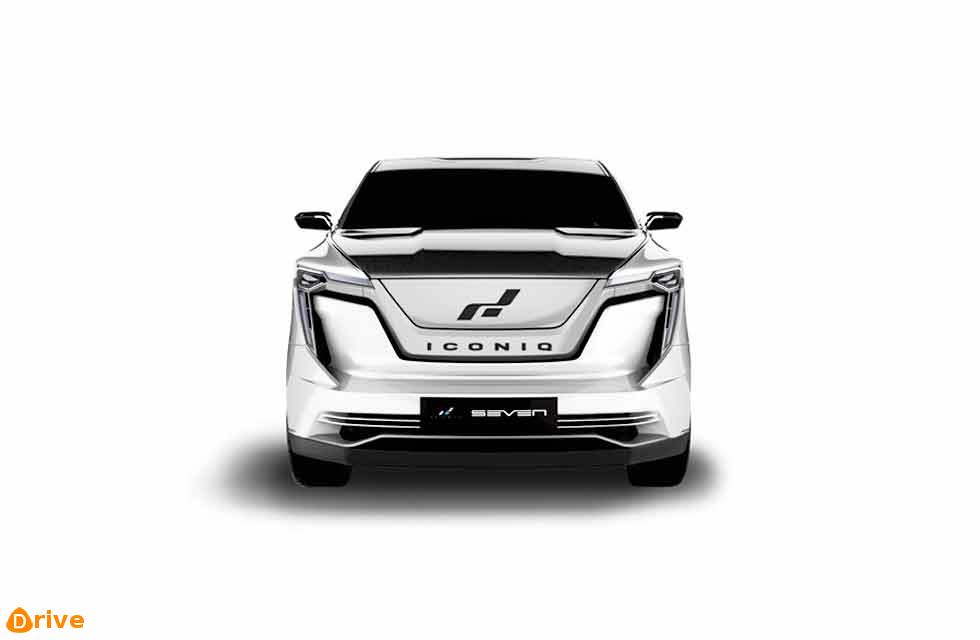With the Seven, Iconiq Motors aims to kickstart a vehicle program for chauffeur-driven customers as well as ridesharing applications…. Words: Craig Thomas.
Sharing is caring TECH INSIDER | ICONIQ SEVEN
The explosion of the Chinese light vehicle market has accelerated the need for the automotive industry to address the implications it has for the country’s (and the planet’s) environment.

Iconiq Motors, founded in 2016 and with its HQ in China, is working on a low-emissions solution aimed at the chauffeur-driven and ride-hailing segments of the market.
The electric Iconiq Seven was unveiled at the Shanghai Auto Show in 2017, with an updated prototype receiving its European debut in Geneva this year.
“The Iconiq Seven has been designed to focus on the passenger first, because China has a big chauffeur-driven market,” says Iconiq CEO Bruno Lambert. “At the high end of the market people have a car with their own driver, plus there’s the shared mobility business.
We’re trying to offer the best solutions for this demand, which is very fast growing. The ridehailing companies are hoping to get vehicles designed for their customers and there is also demand for this kind of concept in the luxury transportation sector, where the benchmark is the Toyota Alphard, which you see a lot of in China. We are aiming for individual customers, but we think that around 70% of our volume will be fleet customers, including ride-hailing companies. So we have a mobility variant, which is seven seats, a premium variant with six seats and the VIP with four seats.”
Life expectancy
The Seven uses a new electric platform that has been developed over 18 months by Iconiq in conjunction with Austrian contract manufacturer Magna Steyr.
“The platform is a 78kW battery pack with a 165kW electric motor,” says Lambert. “The focus is on delivering a solution for shared mobility, so that’s why we’re aiming for a range of 400km [NEDC], which answers the expectations of most ride-hailing companies today in terms of daily use. The powertrain is also designed with shared mobility in mind, so it’s not focused on high performance but the right cost positioning.
“The 42-module lithium-ion battery pack, using a flat-floor layout with a standard battery tray integrated into the structural design of the vehicle, has also been developed with a focus on long life. The design and the BMS make sure that we can sustain 2,000 charging cycles with a degradation of less than 10%,” Lambert adds. “If you compare that with some existing battery packs, you’ll see that after 500 cycles there’s already a degradation of 20-30%. You can have higher residual values, which is important for mobility suppliers, for example.”
Iconiq has sourced the cells for the battery pack from Lishen, the second-biggest battery supplier in China. Lishen’s location in the same economic zone as Iconiq means a guarantee of supply and technology access. The cells, Lambert says, are already in production, so Iconiq is currently testing at module level and pack level.
The motor – Iconiq is using one main motor for front-wheel drive, but is also considering an all-wheel-drive version with in-wheel tech – is also sourced from one of the larger suppliers in China, Jing-Jin Electric (JJE).
“It provides an integrated powertrain system [IPS], integrating a DC-DC converter, inverter and so on into one pack, which makes the weight-to- performance ratio better,” says Lambert. “The controlling system, overall BMS and so on are our own design, but the system level is done by our supplier.
“Through the BMS we are integrating cooling for the whole battery, which we manage, but we’ll get a solution from a supplier: we’re choosing between two major international cooling and HVAC suppliers at the moment.” Production is slated to start in 2019 in Iconiq’s factory in Tianjin, with a second location being sought to meet its target of 70,000 cars a year.
The primary focus is China and the Middle East, but there are also ongoing discussions with European importers and interest from North America. Iconiq is also working toward Level 5 autonomous capabilities, which could see the Seven offer the kind of shared mobility solution that could be commonplace in the future.
- Targeted at the chauffeur-driven and ride-hailing markets, the Iconiq Seven is planned to begin production in 2019.
- The Seven uses a main motor for front-wheel drive, but Iconiq is considering an all-wheel-drive version using in-wheel motors.





